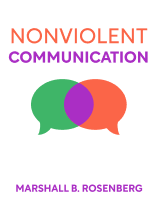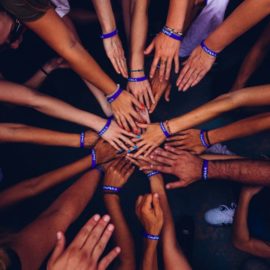

This article is an excerpt from the Shortform book guide to "Nonviolent Communication" by Marshall B. Rosenberg. Shortform has the world's best summaries and analyses of books you should be reading.
Like this article? Sign up for a free trial here .
Do you want to apply Marshall Rosenberg’s nonviolent living philosophy? What are some nonviolent communication exercises you can practice?
NVC is an approach to interpersonal communication that is premised on the idea that all forms of violent communication stem from unmet needs. The following nonviolent communication exercises are designed to help you practice and apply the key concepts and ideas from the book.
Try these nonviolent communication exercises to reinforce your understanding of the book’s key concepts.
Nonviolent Communication Exercises
Nonviolent Communication (NVC) is a way of interacting with other people and ourselves with empathy and compassion. Here are three nonviolent communication exercises to help you apply the NVC philosophy in practice.
Exercise 1: Practice Making Observations, Not Judgments
Making objective observations instead of judgments about people you disagree with is difficult. Practice this skill by starting with positive judgments you’ve made.
- Think of a person or group that you’ve made a positive moralistic judgment about recently. (For example, “My son is so smart” or “The U.S. women’s national soccer team is the best team in history.”) Write that judgment below.
- How can you rephrase that judgment as an observation? (For example, “My son got an A on his spelling test” or “The U.S. women’s soccer team has won four gold medals.”)
- Now, think of a negative moralistic judgment you’ve made in the past. (For example, “My neighbor is a jerk” or “Gun owners are bad people.”) Write that judgment below.
- How can you rephrase that judgment as an observation? (For example, “My neighbor blew all his leaves into my yard” or “Nonviolence is important to me, so I don’t support owning weapons.”)
Exercise 2: Identify Feelings and Needs
Identifying feelings and connecting them to needs takes practice. Try it out now by revisiting a past conversation.
- Think of the last time you had a disagreement with someone close to you (this could be a partner, child, friend, or coworker). What were you feeling during that disagreement? What need gave rise to those feelings?
- Now, think about the person you disagreed with. What were they feeling at the time? What were they needing?
Exercise 3: Practice Emergency Empathy
Sometimes, you may feel so threatened or upset by someone that you’re not able to offer genuine empathy. This exercise will help you make a plan for those situations.
- Think of a person or group that violates your values so profoundly that you find them impossible to empathize with. When you’ve interacted with that person or group in the past, what emotions were you feeling?
- When you think about that person or group now, what emotions come up?
- Thinking about that person or group right now, while you’re not directly interacting with them, do you still find it impossible to empathize with them? What feelings or needs of theirs can you identify?
- The next time you have to interact with this person or group, how can you show yourself some emergency first-aid empathy?
—

———End of Preview———
Like what you just read? Read the rest of the world's best book summary and analysis of Marshall B. Rosenberg's "Nonviolent Communication" at Shortform .
Here's what you'll find in our full Nonviolent Communication summary :
- How nonviolent communication lets you have more compassion for yourself
- Why nonviolent communication is the key to fostering authentic connections with others
- The 4 steps to expressing yourself with empathy towards others






